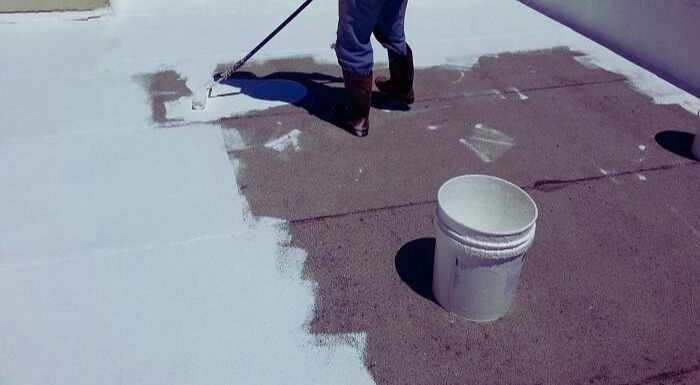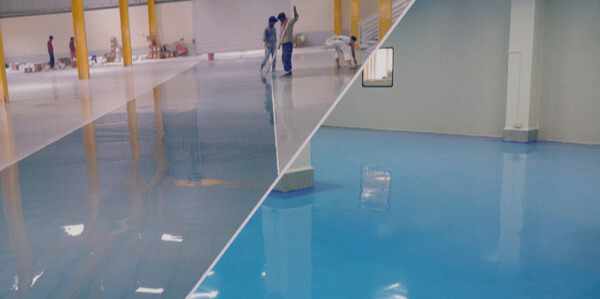PU flooring, or polyurethane flooring, is a highly durable and resilient surface solution commonly used in industrial, commercial, and even residential settings. Its resistance to chemicals, abrasion, impact, and thermal shock makes it an ideal choice for factories, cold storage units, pharmaceutical facilities, and commercial kitchens. However, despite its advantages, the effectiveness and longevity of PU flooring depend heavily on how well it's installed.
Unfortunately, several common mistakes during the installation process can lead to poor performance, premature wear, or even complete failure. In this blog, we’ll discuss these mistakes and how to avoid them to ensure your PU flooring installation is successful and long-lasting.

1. Skipping Surface Preparation
One of the most frequent and damaging mistakes is inadequate surface preparation. PU flooring must be applied on a clean, dry, and structurally sound concrete surface. If the substrate is contaminated with oil, dust, moisture, or old coatings, the polyurethane layer will not adhere properly.
Avoid This:
Always start with grinding or shot blasting the surface to remove impurities and open the concrete pores. A moisture test is also essential to ensure the floor is dry before application.
2. Incorrect Mixing Ratios
PU flooring systems involve mixing resin with hardener and sometimes fillers or pigments. Using incorrect ratios, or failing to mix thoroughly, can result in uneven curing, soft spots, or brittle surfaces.
Avoid This:
Follow the manufacturer’s instructions strictly when it comes to mixing ratios and mixing time. Use mechanical mixers for uniform consistency and avoid mixing large quantities at once if not experienced.
3. Ignoring Environmental Conditions
Polyurethane reacts to temperature and humidity. High humidity can cause blistering or foaming, while extreme cold can delay curing or make the mix too thick to spread.
Avoid This:
Monitor the ambient temperature and relative humidity before and during installation. Most PU flooring products require a controlled environment between 10°C to 30°C with low humidity for optimal application.
4. Applying Over Cracked or Weak Concrete
Many people assume PU flooring can “cover up” existing cracks or weak spots in the substrate. However, polyurethane coatings will not solve structural issues — they may even highlight them over time.
Avoid This:
Inspect the floor for cracks, chips, and spalling. Repair damaged concrete and apply a crack-bridging primer if necessary before proceeding with the PU coating.
5. Not Using a Primer or Base Coat
A primer is crucial for bonding the PU coating to the concrete. Skipping the primer or using an incompatible one can result in peeling, bubbling, or delamination.
Avoid This:
Choose a high-quality primer that suits your PU flooring system and concrete type. Allow sufficient curing time for the primer before applying the topcoat.
6. Rushing the Application Process
Some contractors try to speed up the project by applying thick layers or reducing curing times. This often leads to uneven surfaces, poor bonding, and a lack of durability.
Avoid This:
Follow the step-by-step instructions provided by the manufacturer. Apply thin, even coats and allow each layer to cure completely before proceeding to the next.
7. Using Inexperienced Installers
PU flooring is not a DIY project. It requires technical knowledge, the right tools, and experience to handle the nuances of surface preparation, mixing, and application.
Avoid This:
Hire professional PU flooring services with a proven track record in similar environments. Ask for references, review past projects, and ensure their team is trained in polyurethane systems.
8. Neglecting Edge and Joint Treatments
Edges, corners, and joints are often overlooked during installation, leading to early wear and tear in those areas. Improper detailing can result in cracks or water seepage.
Avoid This:
Use flexible joint sealants and make sure edges are properly finished with cove detailing if needed. This not only protects vulnerable spots but also ensures a seamless, hygienic finish.
9. Poor Planning for Downtime
In commercial or industrial setups, flooring installation can disrupt daily operations. Rushing the job to reduce downtime may compromise quality.
Avoid This:
Plan the installation during low-activity periods or in phases. Give enough time for proper curing so the floor can reach its full strength and finish before use.
10. Not Choosing the Right PU System
PU flooring comes in different types — flexible, rigid, anti-slip, antimicrobial, etc. Choosing the wrong system for your environment will reduce its effectiveness and longevity.
Avoid This:
Consult a flooring expert to select the right type of PU flooring for your specific requirements — whether it’s thermal resistance for food units or chemical resistance for laboratories.
Conclusion
PU flooring offers exceptional durability, hygiene, and performance when installed correctly. But even the best material can fail if common installation mistakes are ignored. By investing in professional installation, proper planning, and a thorough understanding of the product, you can ensure your flooring performs as expected for years to come.
Remember, the success of PU flooring doesn’t just lie in the product itself — it lies in the details of the installation process. Avoid these pitfalls, and you'll benefit from a high-performing, low-maintenance floor that meets all your functional and aesthetic needs.




Write a comment ...